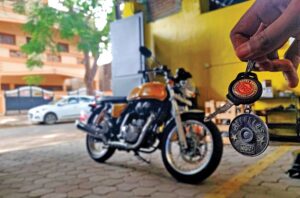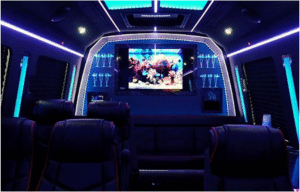A SECOND-HAND BIKE AT THE RIGHT PRICE

In a context increasingly focused on ecology and the circular economy, buying a second-hand bike is clearly part of the trend. Whether it is to reduce your carbon footprint or to respect your budget, one thing is certain, it is important to buy well! Buying a second-hand bike can be daunting, if not more, depending on the budget.
When you ask around, it is clear that the main fear is that of scams of three kinds: on the property, on the quality and on the price. On this last point, you can refer to the article “How to estimate the price of a used bike”. For the other two, we give you our advice to buy your next frame with peace of mind.
1. FIRST OF ALL: WATCH OUT FOR STOLEN BIKES!
Before buying your second-hand bike, make sure that the person selling the bike is the owner!
More than 500,000 bicycles are stolen each year in France and a little reminder, under the law, “buying a bicycle while being aware of its fraudulent origin makes the buyer a receiver”. For the record, concealment is punishable by five years’ imprisonment and a fine of 375,000 euros, it makes you think.
To ensure that the seller is the real owner of the bike, you have three options:
The safest and easiest way is to ask to see the purchase invoice. This must include the serial number of the bike. Remember to check that this number corresponds to the one written on the frame,
In the case of a second hand, a transfer contract in good and due form will also do the trick,
Finally, if the bike is marked or engraved, you can check from this number that it is not registered as a stolen bike and registered in the name of the seller.
2. FOCUS ON THE GENERAL APPEARANCE FIRST
A first impression is often the right one, so if the bike is not washed, the grips are sticky, the screws are defective and the tires are not inflated, beware!
Make sure you can thoroughly inspect the bike in daylight or good lighting conditions.
Take the opportunity to ask questions about the conditions of use of the bike, the mileage, the reason for the sale, the maintenance and any repairs carried out, it’s a good time to know the history of the bike!
3. THE FRAME MUST NOT HAVE ANY STRUCTURAL DEFECTS
The frame is the structural and main part of the bike, any sign of crack, impact (aluminum or steel frame), delamination/breakage of fiber or shock (carbon frame) must be detected.
First check the condition of the paint: beware of repainted frames, abnormal welding marks or glue joints (carbon frame) and the application of stickers which could hide cracks or impacts.
Then make sure there are no dents, dents or cracks in the frame (primarily look for high stress areas such as the lower head tube / upper down tube). Also check that the welds for the aluminum or steel frames are in perfect condition.
For carbon frames, it is a question of detecting fiber breaks or signs of delamination, again in strategic places (those in friction or having suffered small shocks or snags).
If you find structural defects or have doubts, stop there the risk of breakage is too great and the value of the bike is close to zero. As for the aesthetic defects, they are just to be noted to negotiate the price if the latter did not already take them into account.
THE TRANSMISSION SHOULD RUN SMOOTHLY
Buying a second-hand bike with a transmission at the end of its life is like buying a car and having to change the gearbox six months later… it’s expensive!
4.1 TEST CHAIN WEAR
If the chain is dirty or too greased, this is a bad sign. The chain connects the crankset to the cassette, and if it’s in bad shape, chances are it’s already damaged the crankset sprockets and cassette sprockets. Ideally, equip yourself with a chain wear tester that will allow you to know precisely its level of wear as shown in this video.
If you don’t have a chain wear tester, you can do a visual check, but this will obviously be less reliable. Spin the wheel: if the chain does not engage perfectly on the teeth of the crankset, it is worn and the rest of the transmission too.
4.2 DERAILLEURS MUST BE PERFECTLY INDEXED
The gears should shift smoothly, feel free to take the bike for a spin to test it out. Also check that the two derailleurs do not show signs of shock or scratches.
Whether for a mechanical derailleur or especially for an electric derailleur, check the correct alignment of the derailleur hanger on which the derailleur is fixed. Indeed, if it is not perfectly aligned, it may be that the gears shift with difficulty without this being compensated by the adjustment of the derailleur.








